- Clone
- RP/14 (See other available formats)
- Regulatory Status
- RUO
- Other Names
- CD180, Radio-protective 105-kD protein, RP105
- Isotype
- Rat IgG2a, κ
- Ave. Rating
- Submit a Review
- Product Citations
- publications
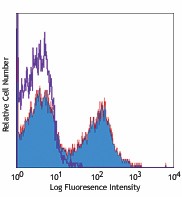
-

C57BL/6 mouse splenocytes stained with RP/14 PE
| Cat # | Size | Price | Quantity Check Availability | Save | ||
|---|---|---|---|---|---|---|
| 117706 | 200 µg | 384 CHF | ||||
CD180 is a 105 kD type I membrane protein, also known as RP105 or Ly64. It is a member of the toll-like receptor family consisting of an extracellular leucine-rich repeat (LRR) and a short cytoplasmic tail. It is expressed on most B cells, monocytes/macrophages, and dendritic cells. CD180 associates with MD-1 to form the RP105/MD-1 surface receptor. CD180/MD-1, by working in concert with TLR4, controls B cell recognition and signalling of bacterial LPS. The ligation of RP105 by RP/14 leads to a strong B cell proliferative response, as well as protection from apoptosis induced by radiation or dexamethasone. Interestingly, in some systems, ligation of RP105 leads to Fas-independent apoptosis.
Product DetailsProduct Details
- Verified Reactivity
- Mouse
- Antibody Type
- Monoclonal
- Host Species
- Rat
- Immunogen
- BALB/c mouse splenocytes
- Formulation
- Phosphate-buffered solution, pH 7.2, containing 0.09% sodium azide.
- Preparation
- The antibody was purified by affinity chromatography, and conjugated with PE under optimal conditions.
- Concentration
- 0.2 mg/ml
- Storage & Handling
- The antibody solution should be stored undiluted between 2°C and 8°C, and protected from prolonged exposure to light. Do not freeze.
- Application
-
FC - Quality tested
- Recommended Usage
-
Each lot of this antibody is quality control tested by immunofluorescent staining with flow cytometric analysis. For flow cytometric staining, the suggested use of this reagent is ≤1.0 µg per million cells in 100 µl volume. It is recommended that the reagent be titrated for optimal performance for each application.
- Excitation Laser
-
Blue Laser (488 nm)
Green Laser (532 nm)/Yellow-Green Laser (561 nm)
- Application Notes
-
Additional reported applications (for the relevant formats) include: immunoprecipitation1-3, B cell activation1,4,5, protection of B cells from apoptosis induced by radiation or dexamethasone and induction of Fas-independent apoptosis1,5. The Ultra-LEAF™ purified antibody (Endotoxin <0.01 EU/µg, Azide-Free, 0.2 µm filtered) is recommended for functional assays (Cat. No. 117709 & 117710).
-
Application References
(PubMed link indicates BioLegend citation) -
- Miyake K, et al. 1994. J. Exp. Med. 180:1217. (FC IP Activ Apop)
- Miyake K, et al. 1995. J. Immunol. 154:3333. (IP)
- Miyake K, et al. 1998. J. Immunol. 161:1348. (IP)
- Chan VWF, et al. 1998. J. Exp. Med. 188:93. (Activ)
- Yamashita Y, et al. 1996. J. Exp. Med. 184:113. (Activ Apop)
- Fujita K, et al. 2012. Immunol Lett. 144:1. PubMed.
- Product Citations
-
- RRID
-
AB_2072827 (BioLegend Cat. No. 117706)
Antigen Details
- Structure
- Member of the toll-like receptor family, 105 kD
- Distribution
-
B cells, monocytes/macrophages, and dendritic cells
- Function
- Signaling protein involved in innate immunity
- Ligand/Receptor
- LPS
- Cell Type
- B cells, Dendritic cells, Macrophages, Monocytes
- Biology Area
- Immunology, Innate Immunity
- Molecular Family
- CD Molecules
- Antigen References
-
1. Miyake K, et al. 1994. J. Exp. Med. 180 :1217.
2. Miyake K, et al. 1995. J. Immunol.. 154:3333.
3. Miyake K, et al. 1998. J. Immunol.. 161:1348.
4. Chan VWF, et al. 1998. J. Exp. Med. 188 :93.
5. Yamashita Y, et al. 1996. J. Exp. Med. 184:113. - Gene ID
- 17079 View all products for this Gene ID
- UniProt
- View information about CD180 on UniProt.org
Related Pages & Pathways
Pages
Related FAQs
- What type of PE do you use in your conjugates?
- We use R-PE in our conjugates.
Other Formats
View All CD180 Reagents Request Custom Conjugation| Description | Clone | Applications |
|---|---|---|
| PE anti-mouse CD180 (RP105) | RP/14 | FC |
| Ultra-LEAF™ Purified anti-mouse CD180 (RP105) | RP/14 | FC,IP,Activ,Apop |
Customers Also Purchased
Compare Data Across All Formats
This data display is provided for general comparisons between formats.
Your actual data may vary due to variations in samples, target cells, instruments and their settings, staining conditions, and other factors.
If you need assistance with selecting the best format contact our expert technical support team.
-
PE anti-mouse CD180 (RP105)
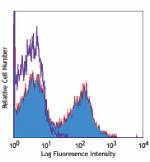
C57BL/6 mouse splenocytes stained with RP/14 PE -
Ultra-LEAF™ Purified anti-mouse CD180 (RP105)
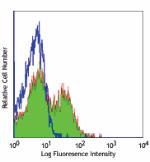
C57BL/6 mouse splenocytes stained with Ultra-LEAF™ purified ...

 Login / Register
Login / Register 










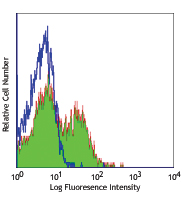
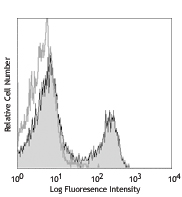
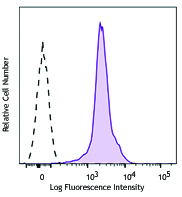




Follow Us